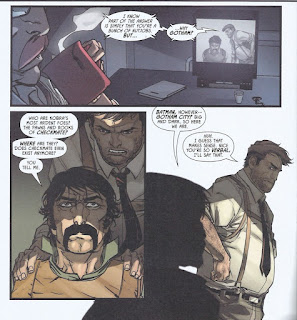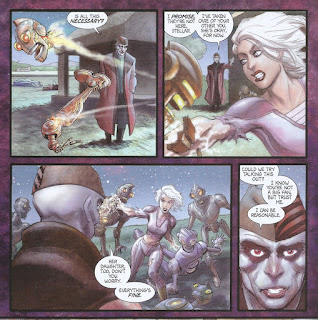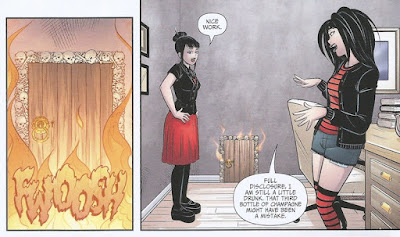Pick of the Brown Bag
October 24, 2018
by
Ray Tate
Words fail when describing the disgust I felt over yet another cowardly Nazi deciding to kill innocent people. The filth murdered eleven in Squirrel Hill, one of my favorite spaces in Pittsburgh. The story would have been much worse had not the police from multiple districts swooped in fast and hot. They were the heroes of the day shooting the asshole and forcing his surrender. This tragic moment in Pittsburgh's history exemplifies a simple fact. Guns in the wrong hands facilitate mass murder.
The Nazi used an AR-15, the same type of weapon favored in the most recent modern day slaughters in Orlando, Las Vegas and Parkland. The Nazi in addition packed two .357 magnum Glocks and a shotgun. All these guns purchased legally. What. The. Fuck. Why would anybody need that many firearms? Why doesn't the ATF investigate the purchase of multiple weapons? The answer is the NRA and the government puppets on their knees servicing them prohibit such a simple commonsense investigation. On November 6th, remember Pittsburgh, remember Orlando, remember Parkland and Las Vegas. Remember Texas. Vote to strengthen gun laws and free the world from the naked greed of the NRA.
Welcome to the Pick of the Brown Bag. My name is Ray Tate, and I review the best and worst comics of each week. Today in the POBB I peruse Batgirl, Detective Comics, Mystery Science Theater 3000, the Red Sonja and Vampirella Halloween Specials, Scooby-Doo Team-Up, Spider-Girls, Spider-Gwen, Titans and X-Men Red. As always should you not have the time or patience for the blog. Check out fresh capsules on Twitter: #PickoftheBrownBag.
It’s always troubling when Mystery Science Theater 3000 selects a movie you actually like for an experiment. I love Gamera and Godzilla films for example.
You breathe a sigh of relief when the crew of the Satellite of Love targets not noble, giant monsters, but the material around them. Godzilla essentially gets a solid A from Joel, Mike and the Bots. It's the human elements and plotting that usually provide the riffing material.
For the second issue of MST3K comic book, the team selects the Black Cat from Harvey. The Black Cat is Linda Turner a stuntwoman turned superhero who battles Nazis and gangsters of all ilk during the 1940s. Given her skills, she’s a credible superhero and drawn with aplomb by Lee Elias. I've always been a fan of the Black Cat.
I’m happy to say. Rather I’m letting out another sigh that MST3K mostly leaves the Black Cat alone and concentrates on the writing goofs or strange setups of the story while smoothly fitting Jonah in the part of period radio announcer Rick Horne.
The second tale which Crow T. Robot infiltrates is a straight up horror story outright stealing from The Incredible Shrinking Man.
This one deserved everything MST3K unleashed, and Crow's solo effort does not disappoint.
Fred, Daphne, Velma, Shaggy and Scooby while in the Mystery Machine, take the wrong turn and end up driving down Danny the Street, one of Grant Morrison’s and Richard Case’s Doom Patrol members.
At the end of the street, the original Doom Patrol is on hand to do what they do best: bicker and fight weird menaces.
The Gang seem to be mere witnesses to the fray until their crime solving minds set to the task and notice something peculiar about the many Doom Patrol menaces appearing and disappearing at will.
I liked bits and pieces of every version of the Doom Patrol. From the Arnold Drake, Bob Haney and Bruno Premiani classic to the John Byrne update. I’ve also disliked bits and pieces of every version of the Doom Patrol.
Sholly Fisch’s and Dario Brizuela’s Doom Patrol combines the classic Doom Patrol with Grant Morrison’s Doom Patrol for one elegant fit.
Through their story Fisch and Brizuella honor the original Doom Patrol the most, respecting other variations and integrating the comedy and lightness of Scooby-Doo Where Are You? The book is a must buy for fans of the classic Doom Patrol. Parents who were fans of Grant Morrison may also like this all-ages friendly introduction to some of his characters.
Detective Comics’ cover gives the game away. So there’s no use hiding Two-Face. The Batman rogue I kept referring to in past commentary for James Robinson's run of Detective.
Due to a series of traumatic events, Batman tries to get back in the game by solving a simple murder. The murder turns out to be anything but simple and suddenly involves twin Fireflies—one of the many clues leading to Two-Face. Except. It's not as simple as that either.
Two Face didn’t actually kill Karl Twist out of malice or as part of a scheme. He instead had ulterior motives. Some of which involved stopping Kobra from gaining a foothold in Gotham City.
Kobra in fact intended to kill Gotham City PD, but Two-Face intervened. Turning a potential bloodbath into a drip.
His other rationale is far more psychologically satisfying, at once preserving the duality of his identity and demonstrating just how insane and distinct Harvey's two sides are.
That said. It's very clear that Two-Face also responded to Kobra instinctively as a former crimefighter. He didn't let Kobra agents kill cops. He saved Jim Gordon's life. Two-Face could have let Kobra slaughter the top cops of Gotham City, but he chooses without flipping a coin to save as many police lives as he can. The only argument I can see Two-Face using is the devil you know. Even he cannot supply an answer. Perhaps its simple pride that he can't allow any outsider kill the people he knows the most. Perhaps he would miss Batman and Jim Gordon as enemies. Whatever the reason, Robinson's Two-Face equivocates to the version on Batman the Animated Series. Not just a villain but a tortured individual, and Detective Comics is a back door Brave and the Bold with Batman teaming with Jim Gordon and Two-Face to stop the greater menace of Kobra.
That said. It's very clear that Two-Face also responded to Kobra instinctively as a former crimefighter. He didn't let Kobra agents kill cops. He saved Jim Gordon's life. Two-Face could have let Kobra slaughter the top cops of Gotham City, but he chooses without flipping a coin to save as many police lives as he can. The only argument I can see Two-Face using is the devil you know. Even he cannot supply an answer. Perhaps its simple pride that he can't allow any outsider kill the people he knows the most. Perhaps he would miss Batman and Jim Gordon as enemies. Whatever the reason, Robinson's Two-Face equivocates to the version on Batman the Animated Series. Not just a villain but a tortured individual, and Detective Comics is a back door Brave and the Bold with Batman teaming with Jim Gordon and Two-Face to stop the greater menace of Kobra.
Mairghread Scott in Batgirl introduced a mystery that many aficionados will have no trouble solving. It’s what’s at the heart of the mystery counts, and that’s actually clever and intriguing.
The story begins with artist Paul Pelletier strutting his stuff when the Gotham PD appear to catch Batgirl redhanded. I'm very happy that some of the cops question the hostile action. They know Batgirl's history as well as the reader. She doesn't kill.
Scott in addition gives Pelletier much to do with Batgirl’s recent injury sustained in her fight against Grotesque.
I don't think I've seen such a remarkable range of visuals depicting vulnerability and injury before. They're as compelling as the straight-up action and the depiction of Grotesque's "addiction."
Scott in addition gives Pelletier much to do with Batgirl’s recent injury sustained in her fight against Grotesque.
I don't think I've seen such a remarkable range of visuals depicting vulnerability and injury before. They're as compelling as the straight-up action and the depiction of Grotesque's "addiction."
The drama between Babs and her father Commissioner Gordon is less interesting, but I’m willing to admit that it’s part of my own bias against Barbara’s twenty-five year crippling. As well as experiencing the unadulterated father/daughter history in the Silver and Bronze Ages of comics.
Scott gets back on track when Batgirl begins to see Grotesque’s superbly diabolical plan unfold before her eyes, but unfortunately, readers will need to wait until the next issue to find out whether or not Batgirl can stop the Dark Web’s latest pawn.
Dynamite published several Halloween specials this week. Each consists of two stories running about twenty-six pages, but at five bucks a pop, they're pretty steep. So, if you're a huge fan of the character, artist and/or writer, have at it. Others can save some coin.
Dynamite published several Halloween specials this week. Each consists of two stories running about twenty-six pages, but at five bucks a pop, they're pretty steep. So, if you're a huge fan of the character, artist and/or writer, have at it. Others can save some coin.
The Red Hood's Scott Lobdell writes both stories in Vampirella and they display his usual, quirky sense of humor as well as a sense of history.
It took me a moment to realize what went on. I don't know Lobdell, but I wasn't aware that he met Forrest J. Ackerman, Trina Robbins and Archie Goodwin, Vampirella's creators, who appear in the story.
The tale isn't however quite a send-up. Lobdell invests in Vampirella's character. Given that this is the "real" Vampirella as opposed to the trio's future creation, Lobdell relies on her Biblical origin as opposed to her alien beginnings in Warren.
He narrates Vampirella's loneliness in her immortality and her busy monster killing lifestyle, and Vee furthermore exhibits confusion regarding pop culture. The art by Rapha Lobosco is also too charged to be considered just for laughs. The second tale illustrated by Anthony Marques, inker Marc Deering and colorist Chris O'Halloran is more burlesque.
Marques returns as writer/artist in Red Sona's second story in which the She-Devil with a Sword rescues a youngster from a cult of lunatics.
The mustachioed goofball reminds me of Godzilla villain Antonio Emperor of Mu.
With Tom DeFalco and relatives Avery and Liam, Marques crafts a bouncy, lusty adventure that's femme positive and damn fun to read.
In the first tale, Amy Chu's co-writer Erik Burnham carries Red Sonja to a peaceful village filled with arm wrestling contests for booze and celebratory nature. The mood changes when a old woman begs Sonja for help.
Hence the adventure ensues with a classic monster that Sonja must first thwart in order to give the elder mother the succor she desires. Artist Tom Garcia presents a powerful Sonja resonating echoes of Frank Thorne in the hair and eyes. He also presents through numerous camera angles to add to the visual depth.
Here's a secret. I don't give a rat's ass about Spider-Geddon. The deuce you say. Aye. Spider-Girls though is a continuation of Amazing Spider-Man Renew Your Vows. Jody Hauser is writing. So, it's like the series never went on hiatus.
The Spider-Geddon part is practically non-existent in fact. We get no Morlun attacks. Just Vultures and Houser makes a point to link the spiders in a surprisingly intrinsic way.
If you're a fan of any of the characters, Spider-Girls is a clean team-up. I can't say if it will stay that way, but this issue strong in characterization and artwork by Andres Gendolet.
I never wanted to drop Spider-Gwen, but the book became such a downer. I can't even blame this on a switch in creative teams. Spider-Gwen's creator instituted the darkness that eventually became Venom. Every faithful reader of the POBB knows how I feel about Venom.
Parasitic alien pair of pants! Correct. Anyhow. That's gone now. Writer Seanan McGuire returns Spider-Gwen to its free-wheeling onset. Perhaps that should be free-webbing. The first thing he does is catch up readers like me that dropped Spider-Gwen, and it's the best kind of exposition: snappy and delivered with fisticuffs.
The would-be victim of the mugging furthermore demonstrates a different attitude than previously experienced. Spider-Gwen's identity is no longer a secret, she went to prison, but somehow she came out of this whole shebang a hero.
From there, Gwen seeks sustenance with one of the few Osborns that didn't go South and eye-spies Peter Porker the Spectacular Spider-Ham. One of the strangest web-slingers ever woven into existence. The Spider-Geddon kicks in blissfully for only one page, and we get to the gist of Spider-Gwen's new swing of things.
So, bear with me. A long time ago, Spider-Man was a street level superhero. He nevertheless crawled along the walls of a shared universe. Spider-Man worked surprisingly well when teaming-up with other superheroes. Tigra for instance. Man-Thing for another. Because of that, he started to encounter stranger and stranger things. This isn't necessarily bad, and Spidey never forgot his roots.
As time went on Marvel started to establish its own multiverse. None of it was as good or concrete as DC's Bronze Age parallel worlds. That changed with the MC2 Universe which gave the world Mayday Parker, the Amazing Spider-Girl and Captain America inspired Shannon Carter The American Dream.
Next, because of the zeitgeist over Emma Stone's Gwen Stacy's death in Amazing Spider-Man 2, Spider-Gwen. It wasn't too long after that Spider-Gwen started meeting different Spiders. Some weren't even part of the Spider-Man lineage. Her namesake Spider-Woman Jessica Drew had nothing to do with Spider-Man, and Anya Corozon another Spider-Girl though dressed in black never succumbed to Venom Couture. These gals formed the core of Web-Warriors, of which original Spider-Man Peter Parker is a member.
So, maybe due to Spider-Geddon, maybe because McGuire wanted to give Spider-Gwen a fresh start, the book begins and ends with Gwen being stuck on a parallel spider-earth. This development isn't good or bad, just different. Nevertheless, the new Spider-Gwen is a tonic both in terms of writing and illustration. The Spider-Geddon stuff is practically superfluous. So, it may be time to return to your friendly neighborhood Spider-Gwen.
The big bad in X-Men Red takes over Rachel, alternate daughter of Jean Grey. Jean decides to make the ultimate sacrifice. Nevertheless, this is a surprising issue of X-Men Red. Writer Tom Taylor makes the moments warm and light as a contrast to the body slaving going on and Jean's willingness to sacrifice a life just resurrected. For example, Kurt attempts to hide his secret from Jean. Storm gives her a metaphorical fashion critique and Gabby as always provides spunky comedy. Gentle tries and fails to ask out Trinary. More after the Titans due to spoilers.
Titans crosses over with Aquaman and the Justice League as part of the Drowned saga, yet again writer Dan Abnett uses the crossover to his advantage.
When Abnett wrote the previous incarnation of the Titans, he distinguished Aqualad--Tempest--as a comical romantic in love with Lilith. Aqualad was far more intelligent and tactical in Aquaman. Both incarnation were good in a fight though.
For this Drowned tie-in, Aqualad chews bubblegum and kicks ass. At the same time, Abnett re-establishes the friendship between Donna and Garth.
Unlike any other author, Abnett makes Aqualad a resonant figure of inspiration.
When Abnett wrote the previous incarnation of the Titans, he distinguished Aqualad--Tempest--as a comical romantic in love with Lilith. Aqualad was far more intelligent and tactical in Aquaman. Both incarnation were good in a fight though.
For this Drowned tie-in, Aqualad chews bubblegum and kicks ass. At the same time, Abnett re-establishes the friendship between Donna and Garth.
Unlike any other author, Abnett makes Aqualad a resonant figure of inspiration.
Honestly, I could always take or leave Aqualad, and my neutrality over the character didn't change when he got the cool eye-beams and the more edgier sounding name. I actually liked Aqualad in this story.
Back to the X-Men, so it's time for the big reveal. The villain d'jour is--last chance to turn back--Cassandra Nova. The fruitcake unleashed nano machines that infused hate of mutant kind to the general populace and mutants. With each issue, Jean took back what Cassandra stole, and last time, the X-Men dealt Nova a crushing blow to the stratagem and her ego. This issue, Nova institutes petty revenge.
Rachel is Jean's alternate daughter and more familiar from Excalibur. Jean intends to make the ultimate sacrifice to save Rachel, but the X-Men want her to reconsider.
Because Taylor makes X-Men Red about something other than X-Men continuity, the book becomes instantaneously entertaining and a breeze to enjoy.
































































































